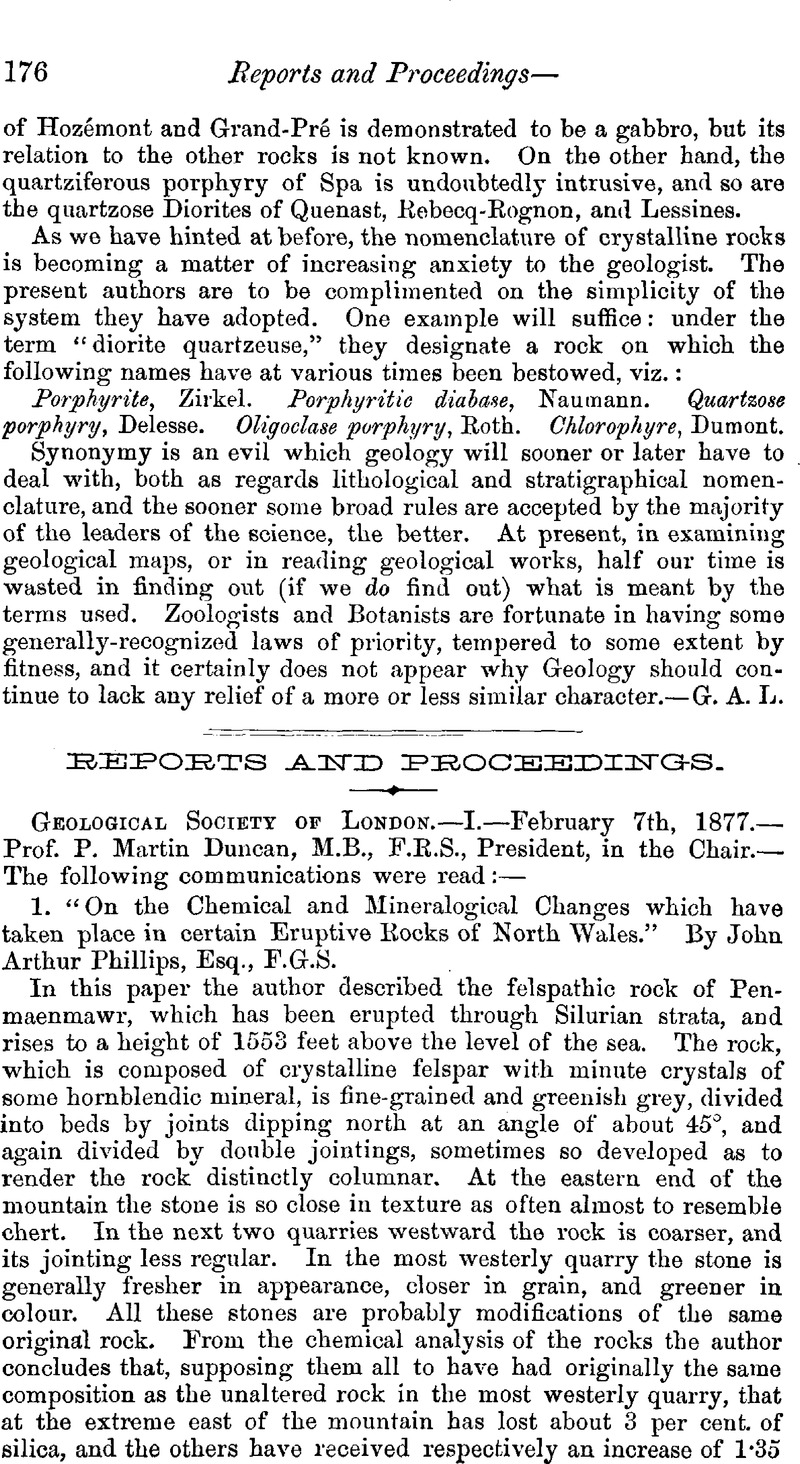No CrossRef data available.
Published online by Cambridge University Press: 01 May 2009

page 177 note 1 Mr. J. W. Hulke, with regard to the pebbles, suggested that the animal may not have swallowed them as an aid to the comminution of food in its stomach, but that they were introduced in the stomachs of fish which it had swallowed. The flesh and, subsequently, the bones of these would be digested and absorbed, whilst the indigestible stones, if the stomach of the Plesiosaurus was like that of Crocodiles, would be unable to pass through the small pyloric opening into the intestine, and must permanently remain iu the stomach.
page 184 note 1 The first draught of the paper, of which the ahove is an account, was drawn up last August, and was shortly after seat to Mr. Evans. It was written independently of the wider view of the subject taken by Sir W. Thomson in his Address delivered at the last Meeting of the British Association, and by Mr. G. Darwin in his paper, of which an abstract has been published in No. 175 of the Proceedings of the Royal Society.